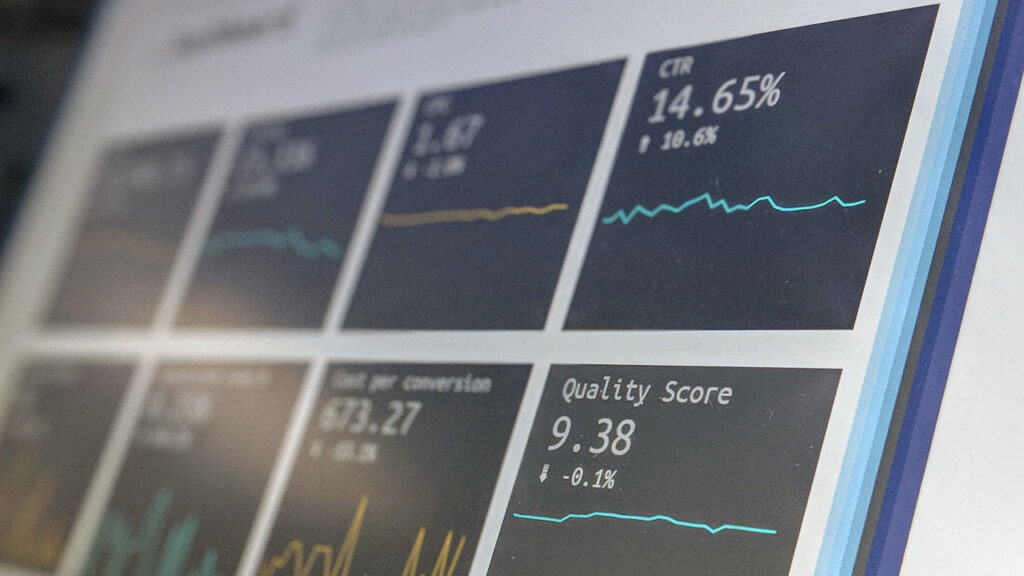Key performance indicators are vital to any business’s success, and businesses in the cannabis industry are no exception. If you really want to know how you’re doing as a venture, then you have to measure your success using metrics that speak to reality. Choosing the right KPIs is a crucial factor towards making regular business reviews worthwhile.
Vanity metrics are enticing, but by definition they’re more of a distraction than they are any worthwhile signal into your business.
Vanity metrics have a few different flavors. Suffice to say that cannabis companies always want to stay in business as margins shrink and competition increases. If they want to manage complex operations alongside the rigid demands of government regulations, then they must forget vanity metrics and start focusing on the numbers that are insightful and actionable.
With this big picture in mind, let’s explore what vanity metrics and cannabis dispensary KPIs are and why they should matter to all types of cannabis companies.
Then, we’ll name some of the most important cannabis marketing metrics that Heady often tracks for cannabis brands as part of our process of cannabis marketing.
What Are Vanity Metrics, and Why Should Cannabis Companies Avoid Them?
Even if you’ve never heard of vanity metrics before, you might be able to guess what they are.
Vanity metrics are those marketing metrics that look really good on paper, but have no tangible value once you look a little bit closer.
Simple example: your e-commerce website generated 10 million unique users over the last six months.
That looks incredible!
But, of those 10 million people, only 100 converted by making a purchase.
That’s a conversion rate of 0.001% over six months.
So, while that 10 million number is impressive in its own right, it got you only 100 sales in the last six months.
Not so impressive.
If a marketing manager for a cannabis company took those 10 million new users back to the boss as a win, while sweeping those meager 100 sales under the rug, that would be a vanity metric.
It would be something touted as a victory that really has nothing backing it up, and certainly nothing that’s going to advance the company’s mission.
It’s all flash and no substance.
Given that, it’s easy to see why cannabis companies should avoid putting any faith into vanity metrics. Sure, you want traffic, subscribers, likes, and followers, but what do they mean if they aren’t driving conversions for you?
It’s that old sales problem of getting lots of calls, but none that are qualified.
If you’re a cannabis company that’s been running into the issue of vanity metrics vs. actionable metrics, then you’ll definitely want to pay attention to the next section.
What Are Dispensary KPIs, and Why Should They Matter to Cannabis Companies?
Key Performance Indicators (KPIs) are used by a marketing team to define success for any given website, marketing campaign, etc.
In the cannabis industry, many of these same KPIs are just as relevant. However, due to the many complex marketing restrictions that are in place, there are some KPIs that are more valuable here than in other industries.
For example, with programmatic campaigns, it can be difficult to get a conversion tracking pixel installed on a dispensary’s site, so instead of declaring online conversions as the main goal, we can use a metric such as in-store visitation to determine the success/failure of a campaign and/or strategy.
You also need to be very careful when it comes to trusting the marketing reports from third-party vendors (such as some of the industry’s SMS providers). Some of these providers might report on “revenue” generated from a campaign, when the reality is that they are just changing the definition of “revenue” on the back end to suit their own needs and prove out a positive return on ad spend (ROAS).
Dispensary KPIs, like all KPIs, are metric based and measurable. They tell business leaders how close or far they are from achieving an objective they set for themselves.
Do you see the difference, then, between vanity metrics and real KPIs?
It’s the contrast between simply celebrating 10 million new users vs. actually seeing that you’re just a small number of sales away from meeting your annual sales goal.
That’s why setting KPIs for your dispensary or cannabis brand is so important. KPIs will actually help you to make decisions or react to what you see happening.
Vanity metrics will only blind you to the truth with rosy glasses. Cannabis companies really should avoid putting any stock into them as indicators of their performance.
The only cannabis marketing metrics that should matter to you are ones that contribute to your growth, mission, or whatever else you want to accomplish.
Speaking of real metrics, what are some KPIs that cannabis companies should start tracking right now?
5 Cannabis KPIs You Should Be Tracking
So, what are the top five key performance indicators?
You can track any KPIs that matter to your business, but some of the most commonly used and popular KPIs include:
- Cost Per Acquisition
- In-Store Visitation
- Online Revenue
- ROAS – Return on ad spend
- Form Fills (giveaways, newsletter signups, etc.)
Other strong KPIs could be LTV (Lifetime value), customer satisfaction, and customer retention rates.
The bottom line is that KPIs will of course be different across companies, but we’ll talk about the most popular ones that we just mentioned that every cannabis company could benefit from tracking.
Cost Per Acquisition
Cost per acquisition, or CPA, is what a business pays to get a customer from the top of the funnel to the bottom, where he or she completes the desired action.
Obviously, you want to keep CPAs as low as possible so your profit margins can increase. If you’re not efficient with your acquisitions and find yourself doing much more work for a customer than is proving worthwhile, then tracking CPA as a KPI will inform you of that.
In-Store Visitation
Visits to your brick and mortar are a fine KPI to track, but only when you’re cutting out the vanity metric part of it.
That means if you’ve been texting out a promotion to get people into the store, and you get a large crowd on that weekend, you still need to have a way of attributing that increase in shopping behavior with the SMS campaign itself.
So, connect the dots via your CRM – what customers received an SMS, that then shopped that weekend?
This is how you connect the dots to prove out that your SMS campaign was a success.
Online Revenue
Online revenue is another common KPI that cannabis brands track. What better way to judge the efforts of your digital marketing campaigns than to track how much money your paid ads and SEO have generated for you over a specific period?
In Google Analytics, you can pull reports that show organic vs. paid sales etc., so this is always helpful. However, just know that on the organic side, someone could enter your funnel on a blog post, read a service page a week later, and then come into your store to make a purchase. It can be a little dodgy to track organic users across mediums.
ROAS – Return on Ad Spend
ROAS is one of the harder KPIs to track for cannabis brands. In many cases, it’s difficult to get a conversion tracking pixel in place on a dispensary website, and there are a ton of iframes being used (we do have a solution for that here at Heady, though).
ROAS shows you how much you’re making versus what you’re spending on paid ads. You find ROAS for a specific period by simply dividing your revenue by your costs for that period.
The result will give you a clear idea of whether you’re profiting from your campaigns, and if so, by how much.
Website Form Fills
As we’ve said, KPIs can be anything that makes sense for your cannabis business to track.
In regard to cannabis company websites, you should have KPIs around some of those metrics, as well. Form fills are one you might consider.
Let’s say, in addition to making sales, you also want to grow your email subscribers list by a certain percentage in the next year. So you engage in initiatives designed to achieve that goal, and you track your progress with the KPI of form fills on your website.
Users complete the form to sign up for the list, and you track it all in Google Analytics or whatever platform you choose.
That’s a KPI! Once you set those goals, the number of fills will tell you how close or far away you are from hitting your goal.
When It’s Vanity Metrics Vs. Actionable Metrics, Trust Heady to Get You the Numbers That Matter
Look, we know we’ve thrown a lot of information out at you in this post. You might need to go back and reread a few things.
The point of it all is that vanity metrics serve only to distract, and you can’t focus on them. You have to look at the numbers that matter, the metrics that actually drive your business, if you want to make it in the cannabis industry.
We understand the struggle here at Heady. Cannabis isn’t like other industries. At least for now, you can’t just go out there and market however you want. There are plenty of regulations and guidelines you need to know first.
Or, you could entrust your digital marketing to our experts. Whether you’re looking for cost-effectiveness, service flexibility, or just plain old digital cannabis expertise so you don’t have to worry about things, we have you covered.
We take everything we know about cannabis marketing and advertising in the digital space and apply it to helping you meet your business goals.
And, by the way, we can definitely help you set KPIs for your dispensary or cannabis brand and track them for you in the background.
Ready to learn more about how Heady can help you? Fill out our form to let us know what you need!




